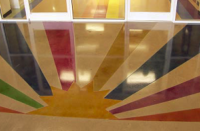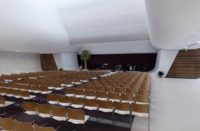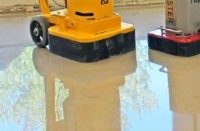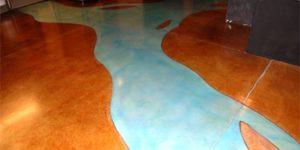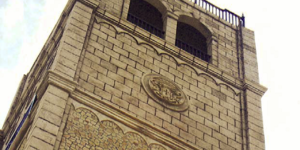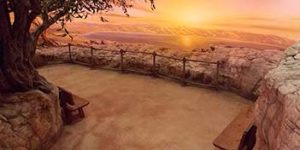Concrete Re-Surfacing Technologies Inc. of Palos Park, Ill., was brought in to finish 8,000 square feet of plain concrete floor at the new Illinois Holocaust Museum & Education Center, one of the nation’s largest memorials to the loss of millions of innocent lives during some of Europe’s darkest hours.
Time was of the essence. In six weeks there’d be up to 15,000 guests, including former President Bill Clinton and internationally acclaimed Holocaust authority and Nobel laureate Elie Wiesel. “It was the first week in March (2009) and the museum was to open April 17,” recalls Concrete Re-Surfacing Technologies president Jim Loughrey.
The museum’s design scheme kept one wing of the space aesthetically stark, sharp-cornered, and somber in appearance and feel. The other wing had softer lines and felt more uplifting and inspiring. The main difference in mood would come from the abundant natural sunlight that would be allowed to filter into the “lighter” space. The concrete floors would be natural and utilitarian throughout.
When Jim Loughrey and his crew took over, they were presented with a work in progress. The concrete contractor had intentionally burned the finish by slightly overtroweling in the final pass with the trowel machines. “The burn is created when the metal blades from the machine leave metallic residue on the surface, creating a marble look,” Loughrey explains. “Higher areas on the surface pick up more residue. That surface was exactly what the architect had in mind for the look he wanted – but that surface would have been too porous and hard to maintain long-term. Our lithium-based polishing process enhanced the marbling and closed the floor for easy maintanance.”
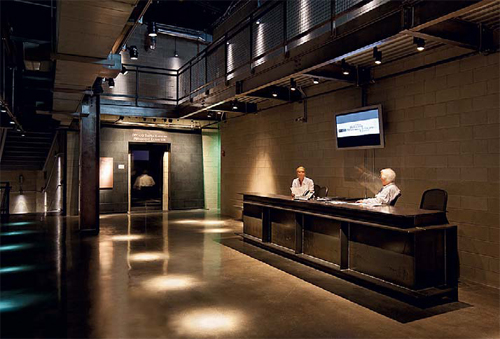
The team also tackled a couple of problems. There was lime run from the walls due to weather exposure before the roof had been installed.
Worse, an acid-based cleaning agent used to detail the concrete block walls had dripped onto the floor, removing the burned cream and graying the floor for up to about 18 inches out from the edges.
To fix the gray, Loughrey and his crew tried polishing first. “I figured we’d polish it to an 800 resin, but the color difference remained,” he says. “We started with wet resin polishing pads, polishing from 100 to 800 grit. Then we densified with a Prosoco hardener/densifier.”
Though faint, evidence of the damage remained. So, within weeks of the building’s ribbon-cutting, the decision was made to spray on an acetone black dye to make the floor color uniform. “We applied more dye at the borders to catch those areas up with the center.” It worked. And it fit the low-key theme to everyone’s satisfaction.
“We think it looks nice,” says Harold Di Vito, project manager for Chicago-based Tigerman McCurry Architects. “Much nicer than we expected. It keeps the essence of the concrete without compromising the aesthetics.” He’s also pleased that he got to choose from several color gradients applied in sample sizes for his approval.
“It’s quite a dramatic place,” says Loughrey. “The floors look like granite.” As he recalls of the frantic times, “We burnished the whole floor (with Prosoco Consolideck LS Guard) on the 14th or 15th and the facility opened on the 17th.” The museum opened with a floor that was striking in appearance, but not too pretty – perfectly appropriate.
www.barefootconcrete.net
